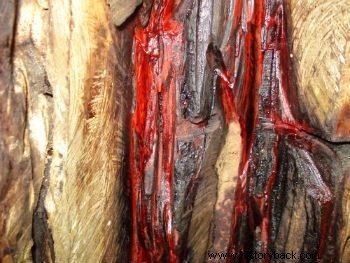The pre-colonial period corresponds to the first years of colonization of Brazil by the Portuguese. It covers the years from 1500 to 1530 and the main economic activity was the exploration of pau-brasil.
Abstract
On April 22, 1500, the Portuguese managed to discover lands that had never been visited on the other side of the ocean. At that moment, Pedro Álvares Cabral's fleet arrived in the territory, consisting of 10 ships and 3 caravels (about 1500 men), which were headed by the navigators Bartolomeu Dias, Nicolau Coelho and Duarte Pacheco Pereira.
First, the main idea of the colonizers was to explore the conquered lands in order to enrich the metropolis and above all, find precious metals.
It was in view of this fact that the process of colonization of Brazil was carried out in a system of colonialism called the “Exploration Colony”. In this sense, the exploration of the discovered lands was the main objective of the Portuguese.
During the first thirty years (1500-1530), since they arrived in Brazil, they discovered pau-brasil, a wood native to the Atlantic Forest, which was successful in the European consumer market.
The first economic cycle in Brazil was then carried out:the pau-brasil cycle. This kind of wood was already used by the Indians for dyeing fabrics.
 Pau-Brasil
Pau-Brasil
Initially, they tried the barter process with the indigenous people, that is, in exchange for the wood they offered them mirrors, knives, coins and various objects.
However, as time passed, they began to exploit the indigenous population that had been enslaved for years in Brazil. Thus, the Indians were forced to cut the wood that was later sent for commercialization on the European continent.
Over time, the factories were created to store and facilitate the shipment of the product. The first factory was built in 1504 in the region that is now the city of Cabo Frio, in Rio de Janeiro.
In addition to serving as points that marked the Portuguese colonization in the country, the factories were fortified trading posts built close to the coast. Therefore, they served to organize the entire commercial structure (market, warehouse, customs, etc.) and were also used for defense.
In such a way, any people who extracted wood from the region had to pay tribute to the Portuguese, since it was their commercial monopoly.
After this initial period, and given the extinction of the wood that had been exploited for years, the Portuguese could no longer get rich.
It was in this context that the first sugarcane seedlings arrived in Brazil, in 1530. It was the end of the pre-colonial period and the beginning of the country's second economic cycle:the sugarcane cycle.
Hereditary Captaincies and General Government
In 1534, in order to better explore the territory, D. João III proposed the creation of the system of Hereditary Captaincies.
Thus, the territory was divided into 15 captaincies, which were granted to 12 donatarios (trusted nobles), who would be responsible for exploring, administering and populating the colonies.
Parallel to this, and given the failure of the hereditary captaincies, the general government was implemented in 1549, with the aim of decentralizing power.
Learn more about the topic by reading the articles :
- Colonial Brazil
- Hereditary Captaincies
- General Government
